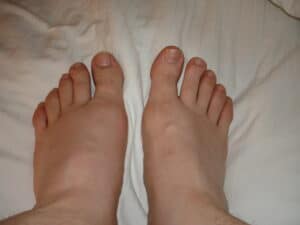Gout is a painful and debilitating condition caused by the buildup of uric acid crystals in the joints. It’s often associated with dietary choices, and one such choice that’s under scrutiny is chocolate. In this comprehensive blog post, we’ll explore the relationship between chocolate and gout, specifically focusing on different types of chocolate, their components, and their potential impact on gout. By the end, you’ll have a better understanding of whether chocolate can be a part of a gout-friendly diet.
Understanding Gout

Gout, often referred to as “the disease of kings,” is a painful form of arthritis caused by the buildup of uric acid crystals in the joints. These crystals can lead to excruciating pain and inflammation, primarily affecting the joints, most commonly the big toe. It’s a condition that can significantly impact one’s quality of life. Diet is a critical factor in managing gout.
The primary objective is to lower the intake of foods that can trigger gout attacks. These triggers often include foods high in purines, which can raise uric acid levels and lead to crystal formation. By making informed dietary choices, individuals can effectively reduce the frequency and severity of gout episodes, providing relief from this painful ailment.
The Role of Chocolate

Chocolate, derived from the seeds of the Theobroma cacao tree, comes in various forms, and each type has its unique composition. Two primary components in chocolate are cocoa solids and cocoa butter, which can impact gout patients differently.
Dark Chocolate
Dark chocolate is renowned for its high cocoa content. Cocoa solids are rich in antioxidants and can potentially improve blood circulation and boost the immune system. However, it’s essential to consume it in moderation, as excessive consumption can lead to weight gain and high blood pressure, both of which can worsen gout.
Milk Chocolate
Milk chocolate, while delicious, contains milk solids and added sugar, which can contribute to high fructose corn syrup, a potential trigger for gout attacks. Gout sufferers need to be cautious about indulging in milk chocolate, as it can lead to elevated uric acid levels.
White Chocolate
White chocolate contains no cocoa solids but is made from cocoa butter, sugar, and milk solids. It’s sweet, but it lacks the health benefits associated with dark chocolate. Gout sufferers should be wary of its high sugar content.
Cocoa Powder
Cocoa powder is the pure, unsweetened form of cocoa solids. It’s a versatile ingredient that can be incorporated into various dishes, but gout patients should use it cautiously due to its purine content, which can lead to higher uric acid levels.
Raw Cacao
Raw cacao is minimally processed and retains a high concentration of antioxidants. It may have a neutral or slightly beneficial effect on gout when consumed in moderation.
Baking Chocolate
Baking chocolate has a high cocoa content but is often used in small quantities in recipes. It’s less likely to trigger gout attacks, but portion control is still crucial.
Chocolate Consumption and Gout Attacks

The relationship between chocolate and gout attacks isn’t one-size-fits-all. Some gout sufferers may find that they can enjoy chocolate in moderation without adverse effects, while others may need to eliminate it entirely from their diet.
Health Benefits of Chocolate for Gout
It’s worth noting that some components of chocolate, particularly those in dark chocolate, can have potential health benefits for gout sufferers, including improved blood circulation and antioxidant properties. These can be beneficial for the overall health of gout patients.
Adverse Effects of Chocolate on Gout
On the flip side, the sugar content in milk and white chocolate, as well as the purine content in cocoa products, can be detrimental to gout patients. Excessive consumption of these can raise uric acid levels and trigger gout attacks.
Dietary Recommendations
For gout sufferers who want to include chocolate in their diet, it’s crucial to do so in moderation and choose dark chocolate with a higher cocoa content. Portion control is key to prevent overconsumption.
Research and Studies
Recent studies have explored the impact of chocolate on gout, with mixed results. Some research suggests that theobromine, a compound in chocolate, may inhibit uric acid crystallization, while others indicate the potential for adverse effects due to high sugar content.
Final Thoughts: Chocolate and Gout
To sum up, the connection between gout and eating chocolate is intricate. While certain varieties of chocolate, notably dark chocolate, could offer potential health advantages to those with gout, other options like milk and white chocolate might pose challenges.
It is imperative for individuals managing gout to seek guidance from their healthcare providers and customize their dietary choices according to their unique requirements. The pivotal rule to bear in mind is moderation; occasionally enjoying genuine chocolate can indeed be a component of a gout-conscious diet.
